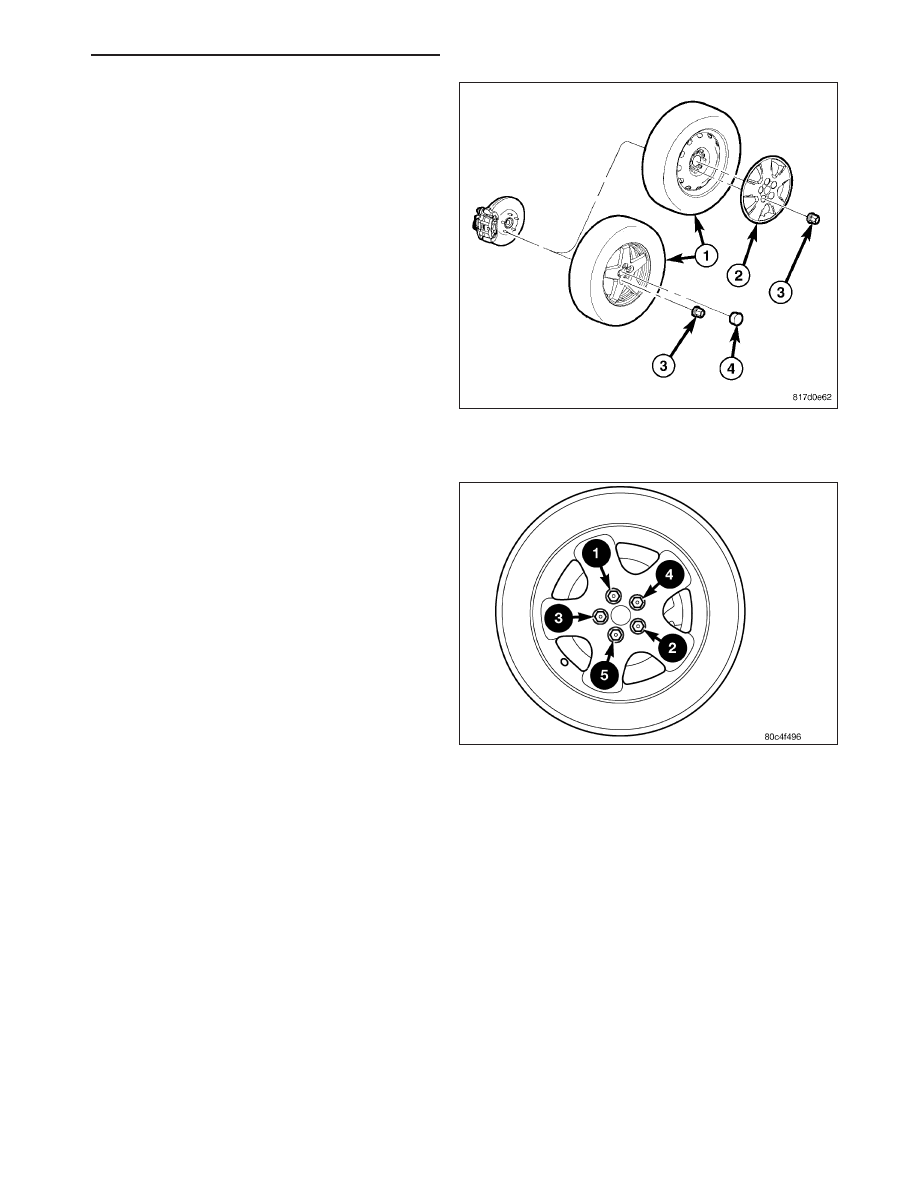Content .. 1307 1308 1309 1310 ..
Dodge Caliber. Manual - part 1309

1. Clean wheel mounting surfaces, removing any
build-up of corrosion. It is important to have good
metal-to-metal contact between the wheel and
vehicle.
2. Position the tire and wheel assembly (1) on the
wheel mounting studs using the hub pilot as a
guide. Place and hold the wheel flush up against
the mounting surface.
NOTE: Always use the original (OEM) style wheel
mounting (lug) nuts. Do not use replacement parts
of lesser quality or substitute design.
3. Install and lightly snug all five wheel mounting (lug)
nuts (3) Do not tighten at this time.
4. If applicable, install the wheel center cap.
5. Lower the vehicle.
6. Progressively tighten all wheel mounting nuts in the
proper sequence shown. Tighten nuts to a final
torque of 135 N·m (100 ft. lbs.).
TIRE AND WHEEL ASSEMBLY - STEEL WHEEL
WARNING: Installing wheels without good metal-to-metal contact with the mounting surface could cause
loosening of the wheel mounting (lug) nuts. This could adversely affect the safety and handling of the vehi-
cle.
NOTE: Never use oil or grease on studs or wheel mounting (lug) nuts.
PM
TIRES/WHEELS - SERVICE INFORMATION
22 - 63